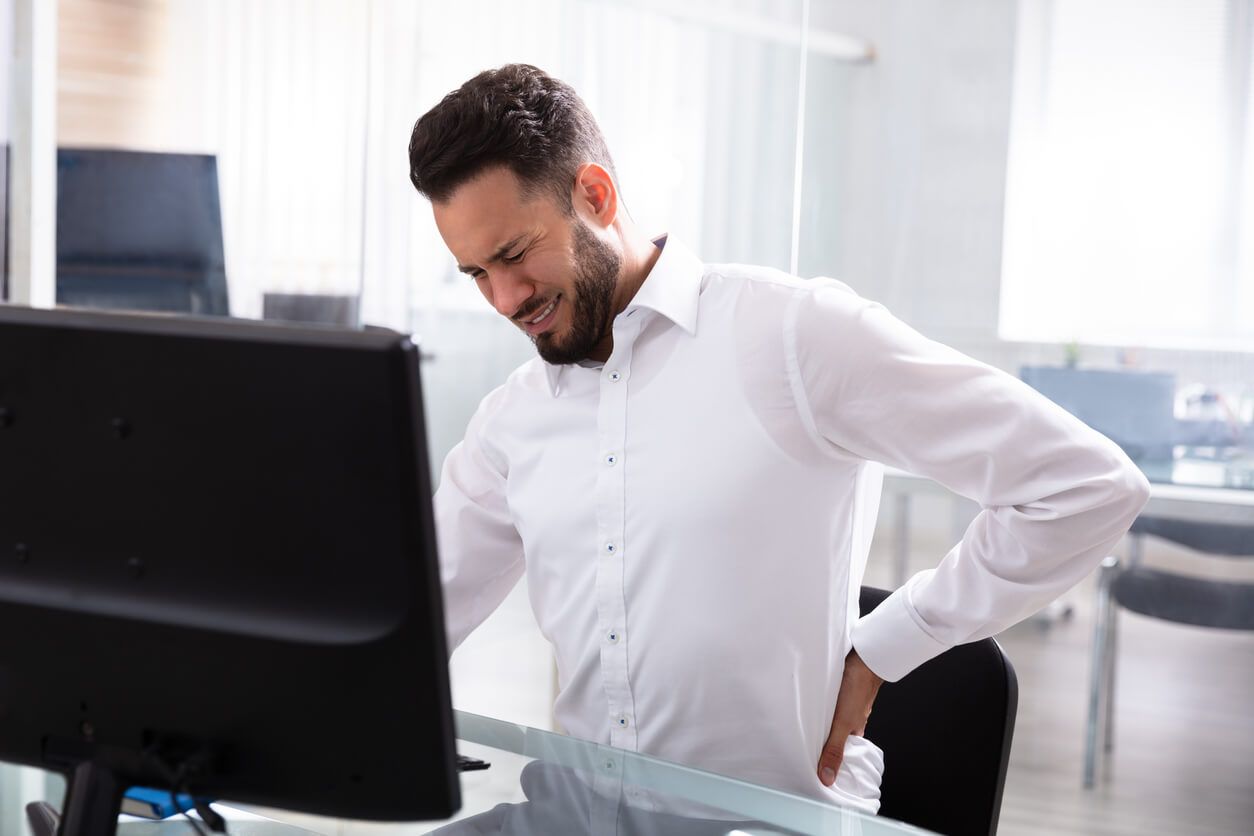Back pain causes economic as well as physical distress. As the primary reason workers take sick days, back pain has a strong negative impact on both workers and employers. Government studies have shown that there are several important ways businesses and their employees can be proactive in addressing acute and chronic back pain. Taking these actions will improve the daily lives of employees while also protecting companies’ bottom lines.
Consulting with a medical team that focuses on back pain at the onset can make a tremendous difference going forward. Those troubled by back pain on Long Island are fortunate to have Long Island Spine Rehabilitation Medicine available in five offices throughout Nassau and Suffolk Counties. Our talented team of physiatrists takes a multi-pronged approach to both diagnosis and treatment with an extremely high rate of success.
Which jobs carry risks of developing back pain?
Unfortunately, in the modern world, far too many occupations put workers at risk for developing back pain. Occupations that have a high rate of back pain include:
- Healthcare workers who are on their feet for much of their work time, often have to move and lift patients and are also frequently working under tremendous stress
- Construction workers and other manual laborers who work in manufacturing, auto mechanics, sanitation, agriculture and any other fields that require heavy lifting, frequent bending and twisting
- Road maintenance workers who work heavy machinery that may vibrate (e.g. jackhammers, grinders, chain saws)
- Assembly line workers who stand in one position and perform repetitive tasks
- Teachers, cashiers, food preparers, and other workers who often spend most of their work time standing
- Truck drivers, taxi drivers, rideshare drivers, bus drivers who sit in one position for long hours
- Those who work at computers for prolonged periods: e.g. programmers, technical writers, financial workers, administrative assistants
Back pain is very costly to individual workers, the health care system, and the businesses that lose employees for extended periods of time. Back pain health insurance claims are estimated to cost the U.S. over $20 billion annually.
Individual Risk Factors Complicate the Problem
Whether employees are diagnosed with a herniated disc, sciatica, spinal fracture or some other type of spine condition, there may also be non-job-related factors contributing to their difficulty, such as:
- Congenital defects (e.g. scoliosis)
- Disease conditions (e.g. osteoporosis, osteoarthritis)
- Poor posture
- Excess weight
- Lack of exercise
- Smoking
- Psychological problems related or unrelated to the workplace
While all of us have personal problems at home, it is important to realize that many workers have job-related issues that cause them emotional anxiety or stress, including:
- Monotonous, mindless tasks
- Workload that feels excessive
- Time pressure making them feel unable to meet deadlines
- Feeling bullied, discriminated against or harassed
- Feeling unappreciated, disrespected, or dissatisfied
- Difficulty with a boss or a co-worker
Wise employees attempt, as much as possible, to exert control over the work environment that is contributing to their discomfort on the job. Wise employers are proactive in addressing issues like these on a general, as well as specific level, for example making sure that all employees are aware of the laws pertaining to discrimination and harassment at the workplace.
Other Ways Smart Companies Try to Prevent Occupational Back Pain
In addition to setting a tone of cooperation, appreciation, and mutual respect among staff members, companies that want to keep personnel up and running are increasingly implementing one or many of the following options to prevent employees from suffering back pain:
- Providing up-to-date information for those who do heavy lifting about the safest ways to lift without damaging your back
- Providing practical information to all vulnerable employees about back care, posture, body mechanics, back exercises, and how to prevent chronic back pain
- Using devices that lessen the strain put on workers, like mechanical hoists to lift patients in hospitals to relieve nurses of this strenuous task
- Making the workplace more ergonomic in terms of supportive seating, desks with adjustable height, accessible shelving, etc.
- Providing sufficient breaks and encouraging exercise at the workplace — many businesses have rooms with exercise equipment and may offer classes in yoga, stretching and other movement designed to keep their workers limber
Such measures have proven to be cost-effective in increasing productivity as well as cutting the number of sick days employees take for back pain. Although large white collar corporations and schools in high-end communities were ahead of the curve in such back pain prevention procedures, factories and manufacturing plants, too, are now encouraging exercise in an effort to avoid back and other injuries.
What if, in spite of all proactive measures, you suffer occupational back pain?
If, all preventive measures notwithstanding, you experience sudden serious back pain or a nagging ache that worsens over time, it is time to take action. If a day or two of rest, ice or heat applications and over-the-counter anti-inflammatories (like ibuprofen) don’t do the trick, it is time to consult with a knowledgeable spine specialist. Seeking help promptly for accurate diagnosis and appropriate treatment for your back pain will likely shorten its severity and duration.
